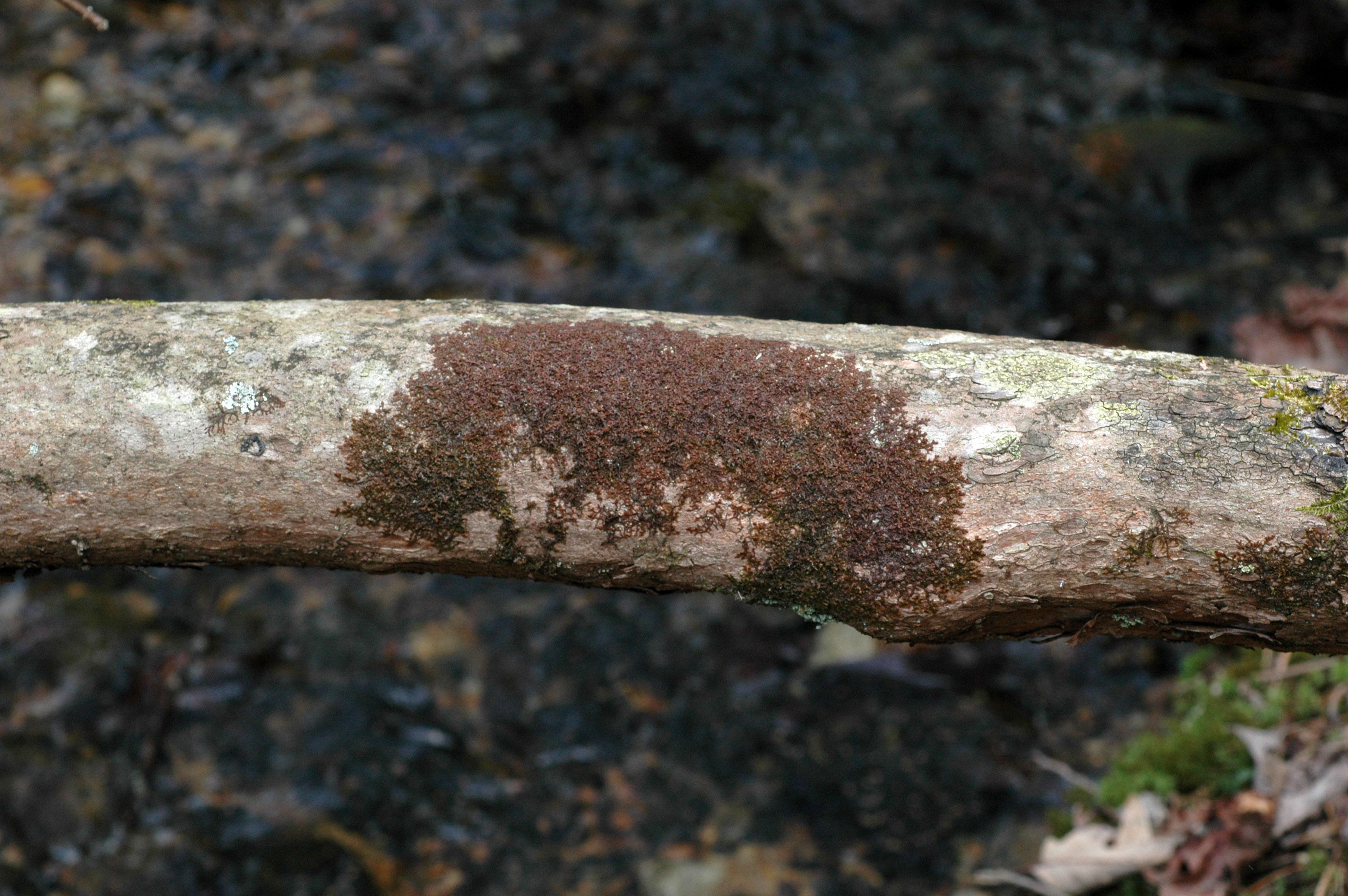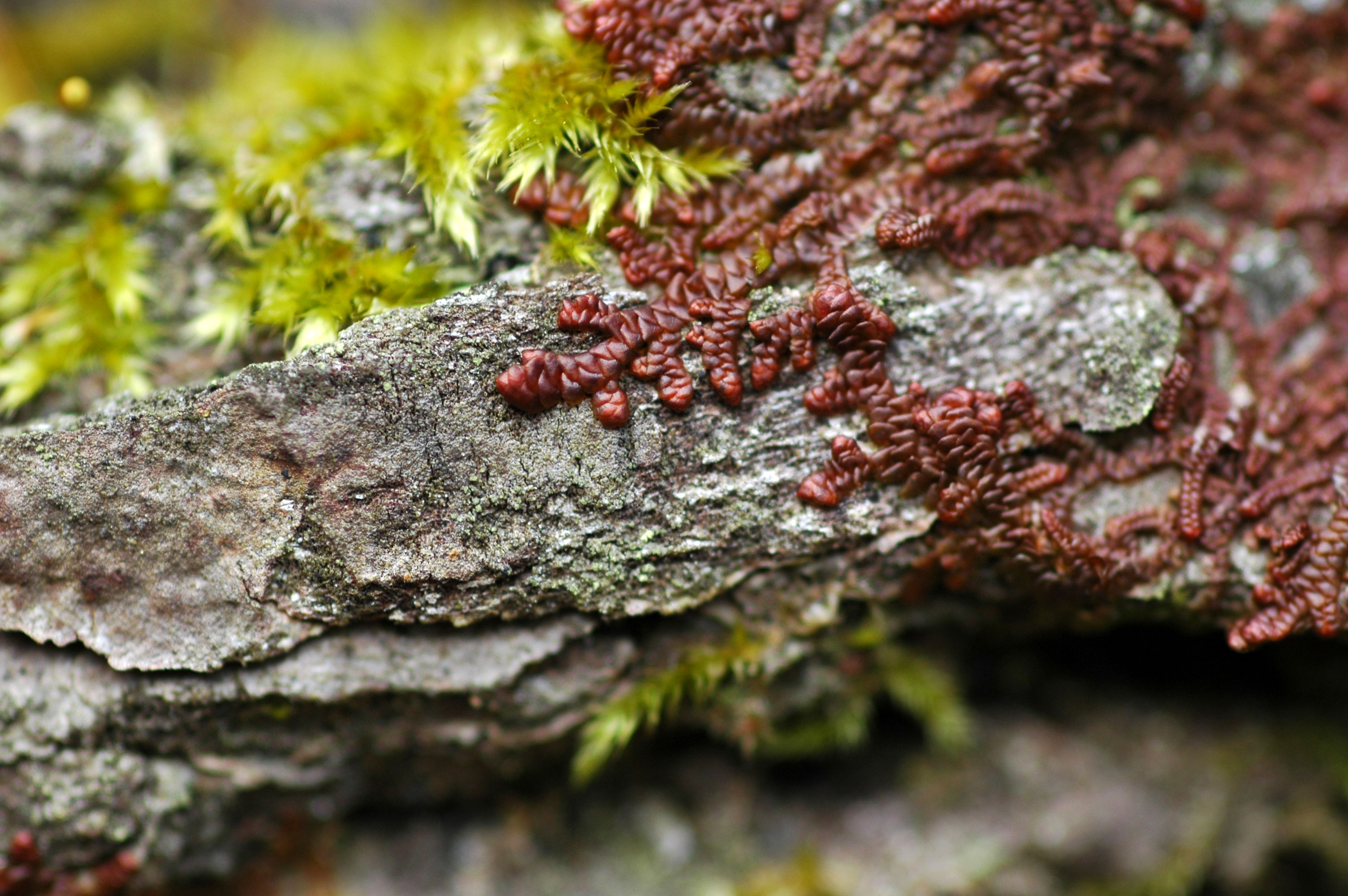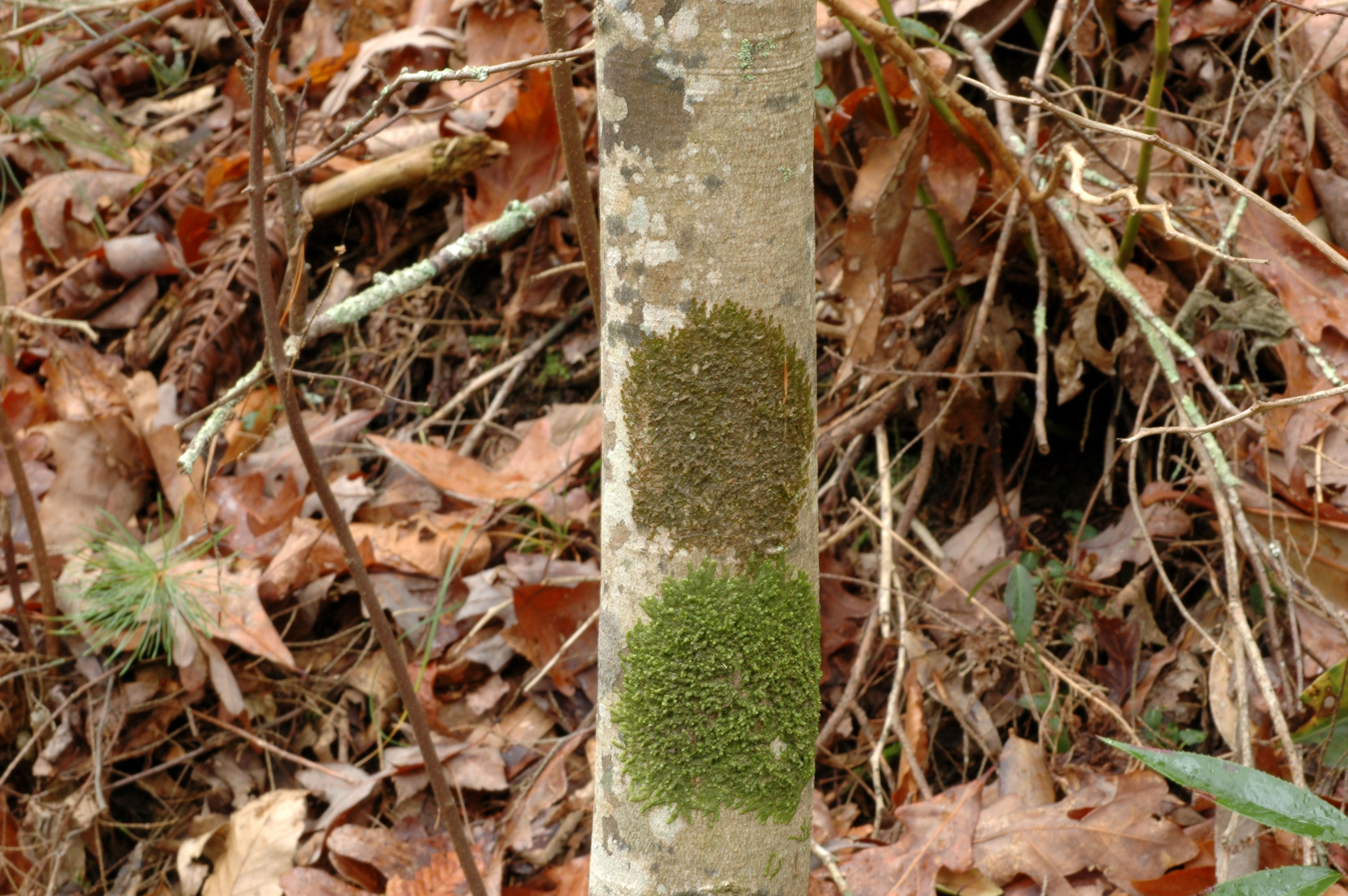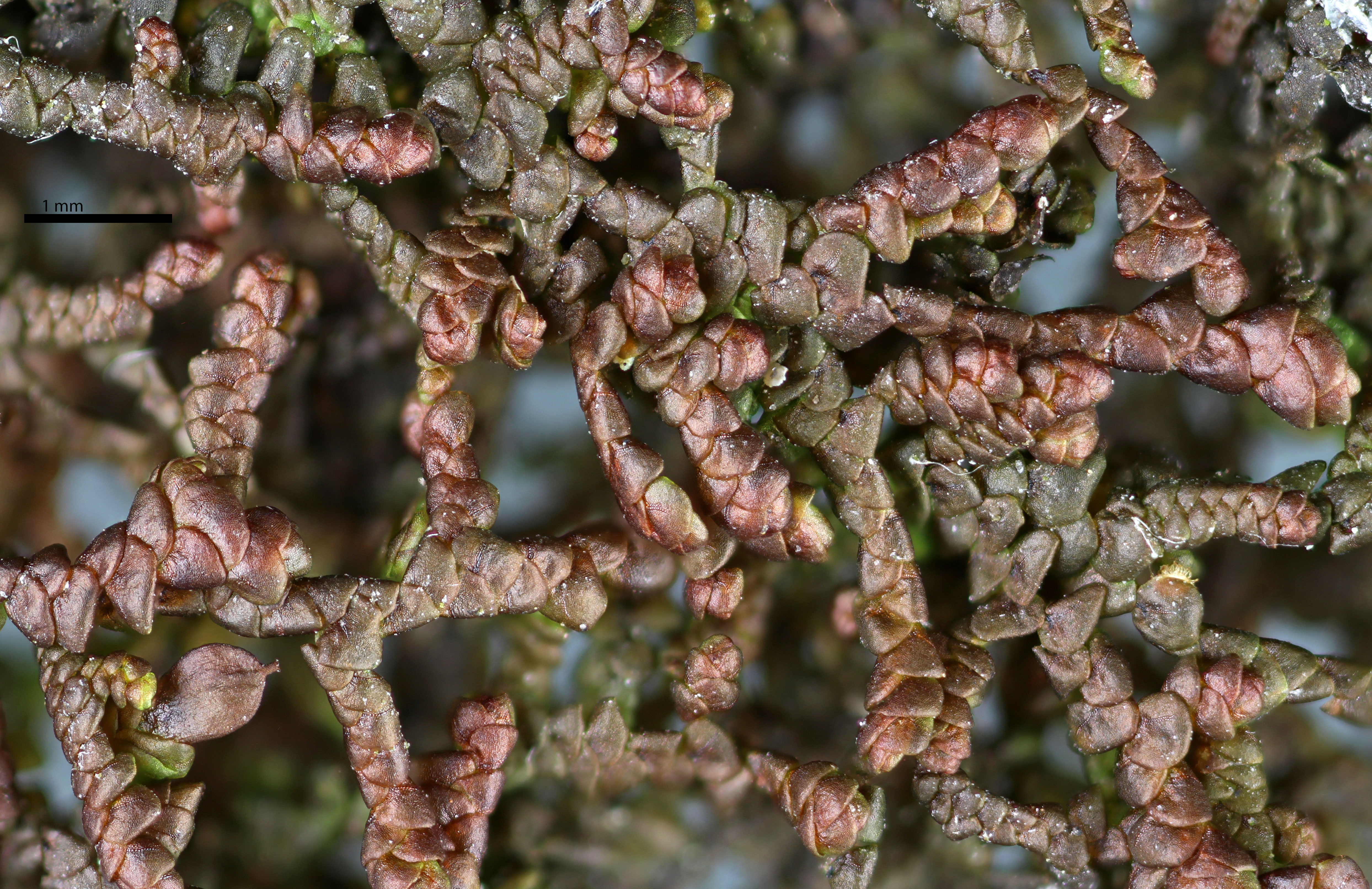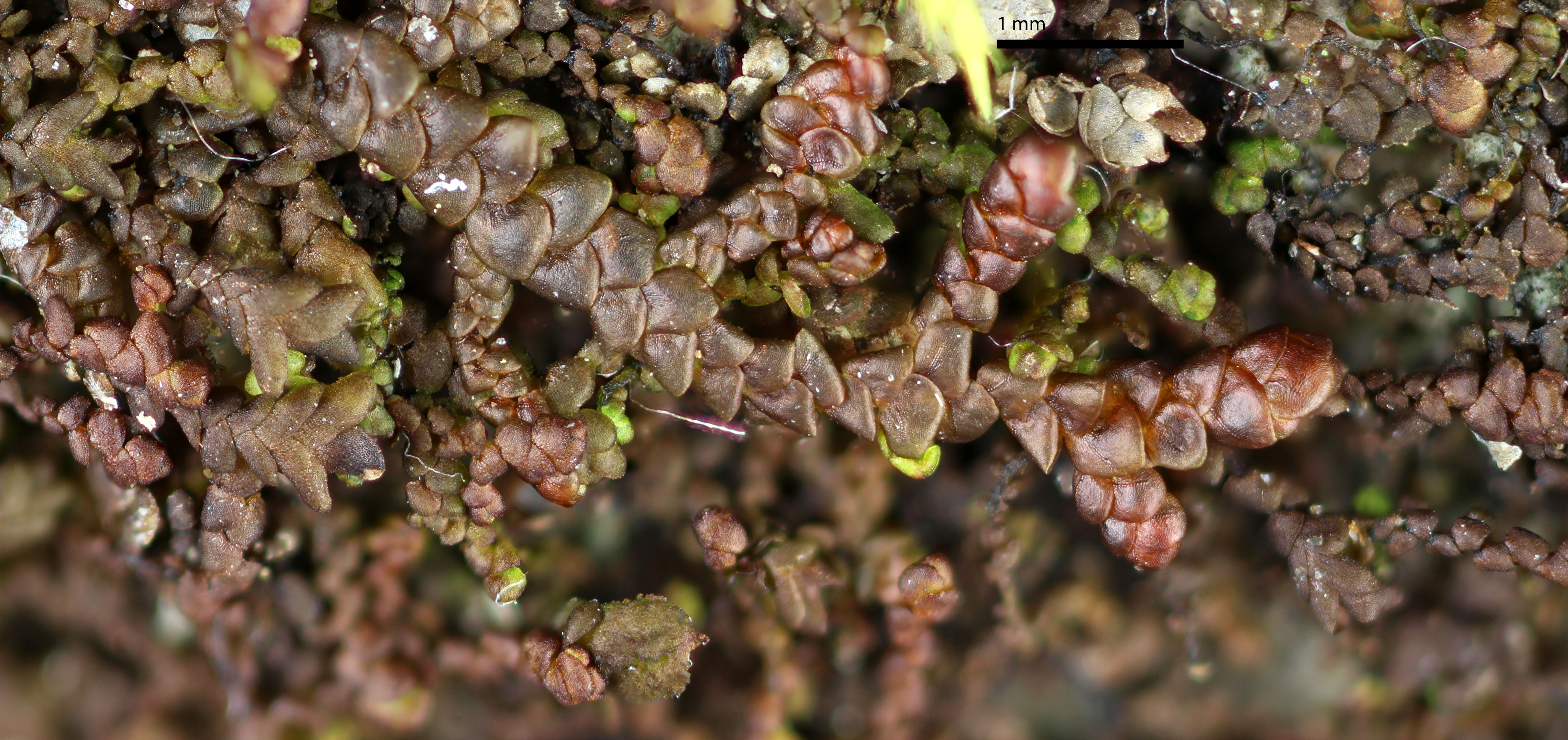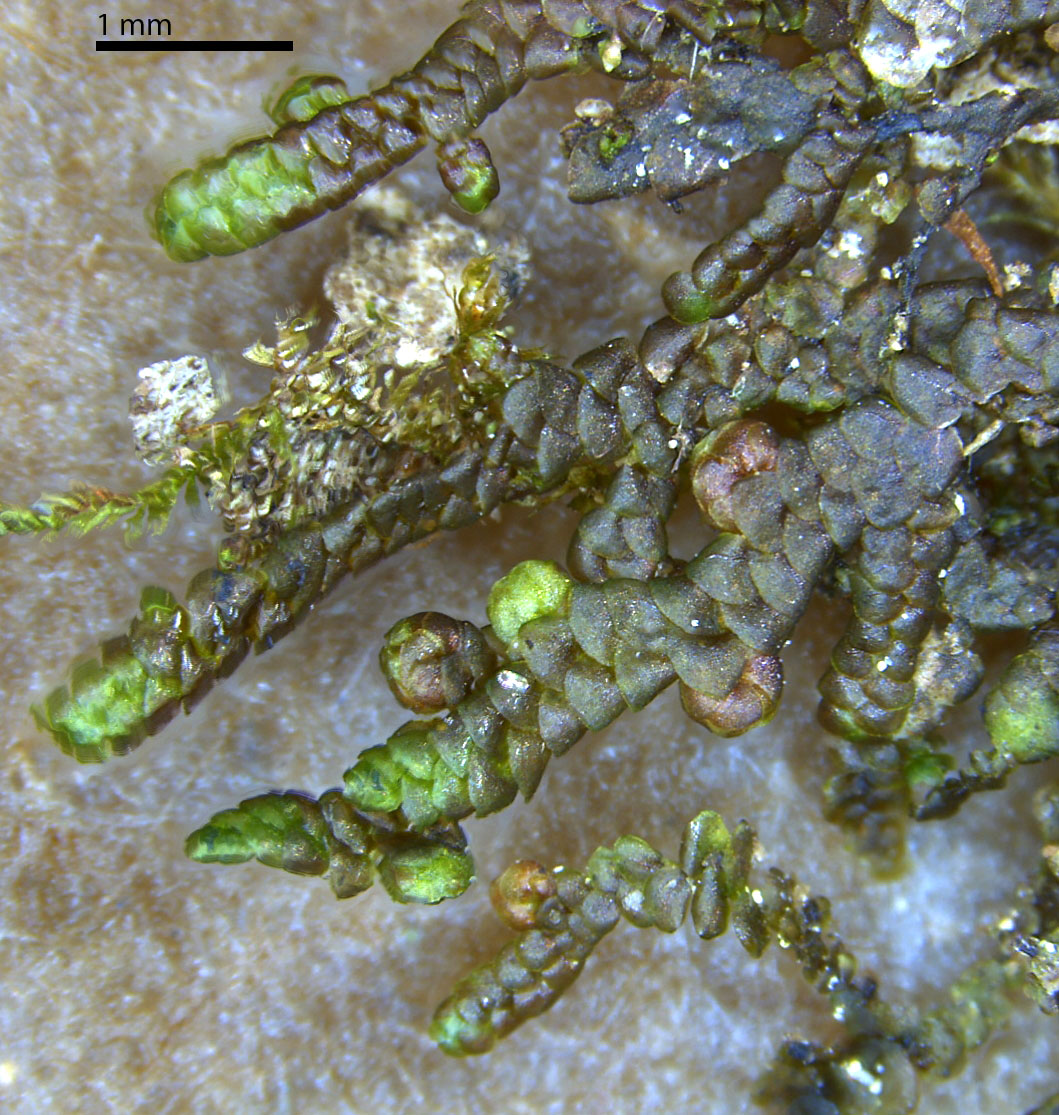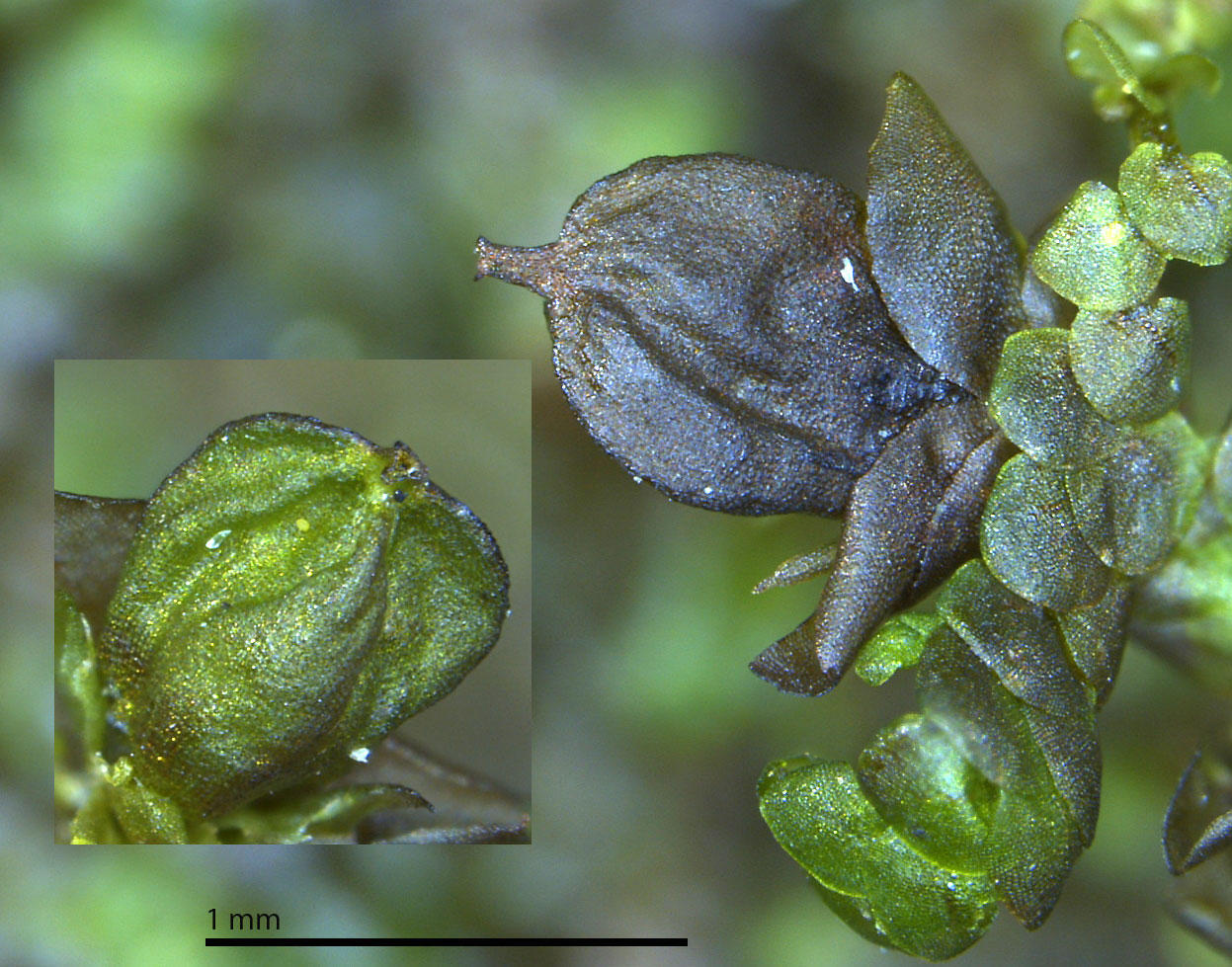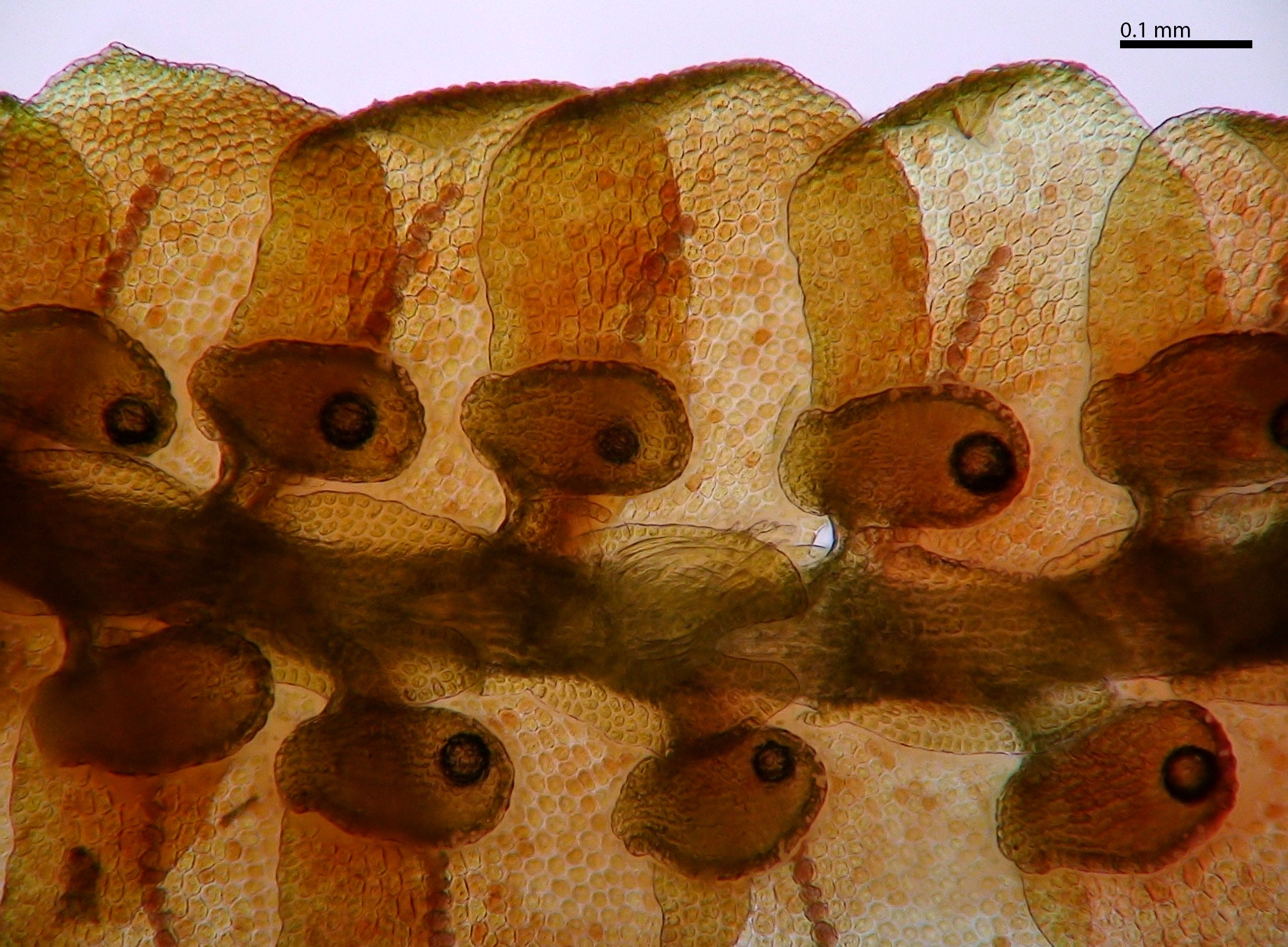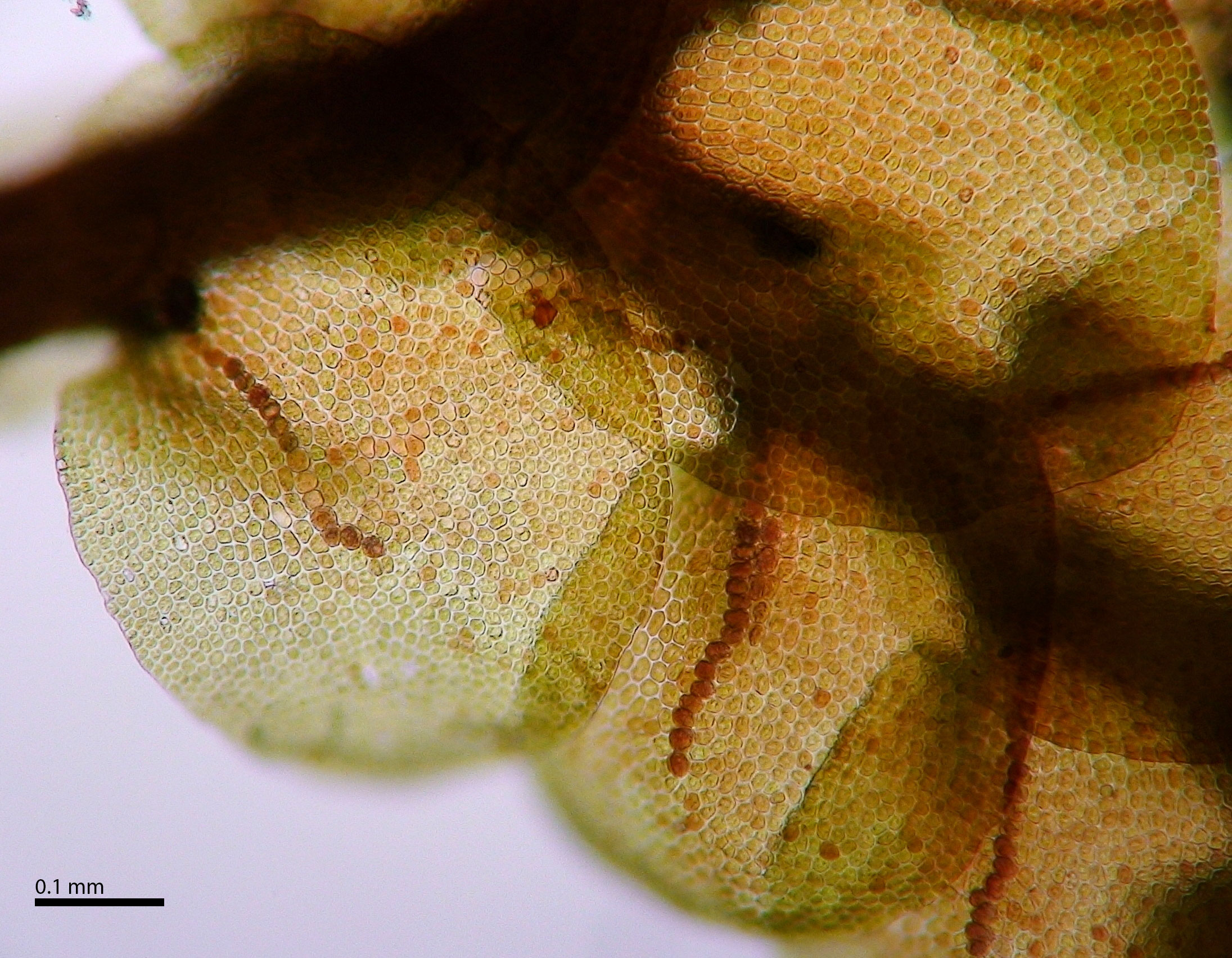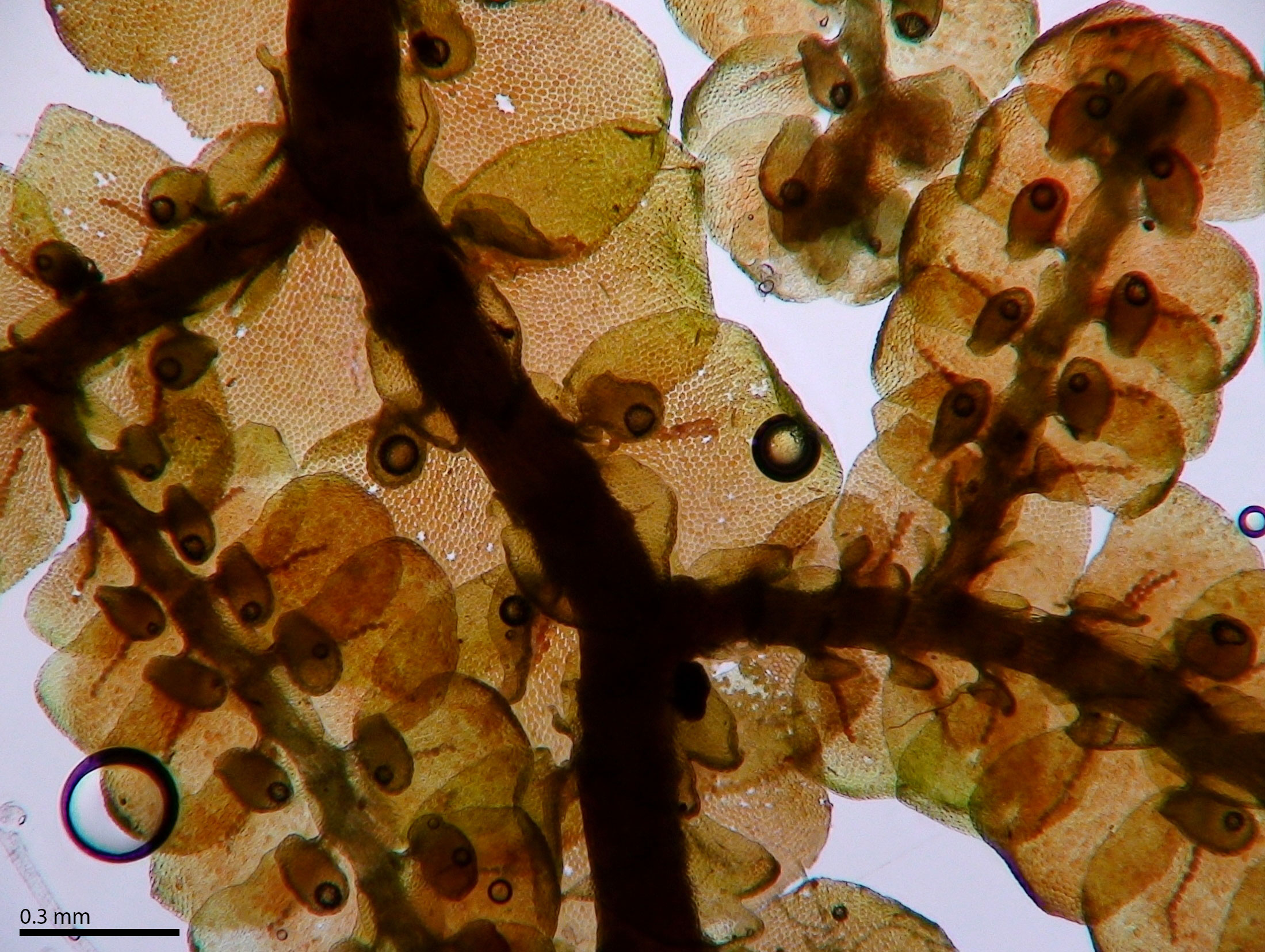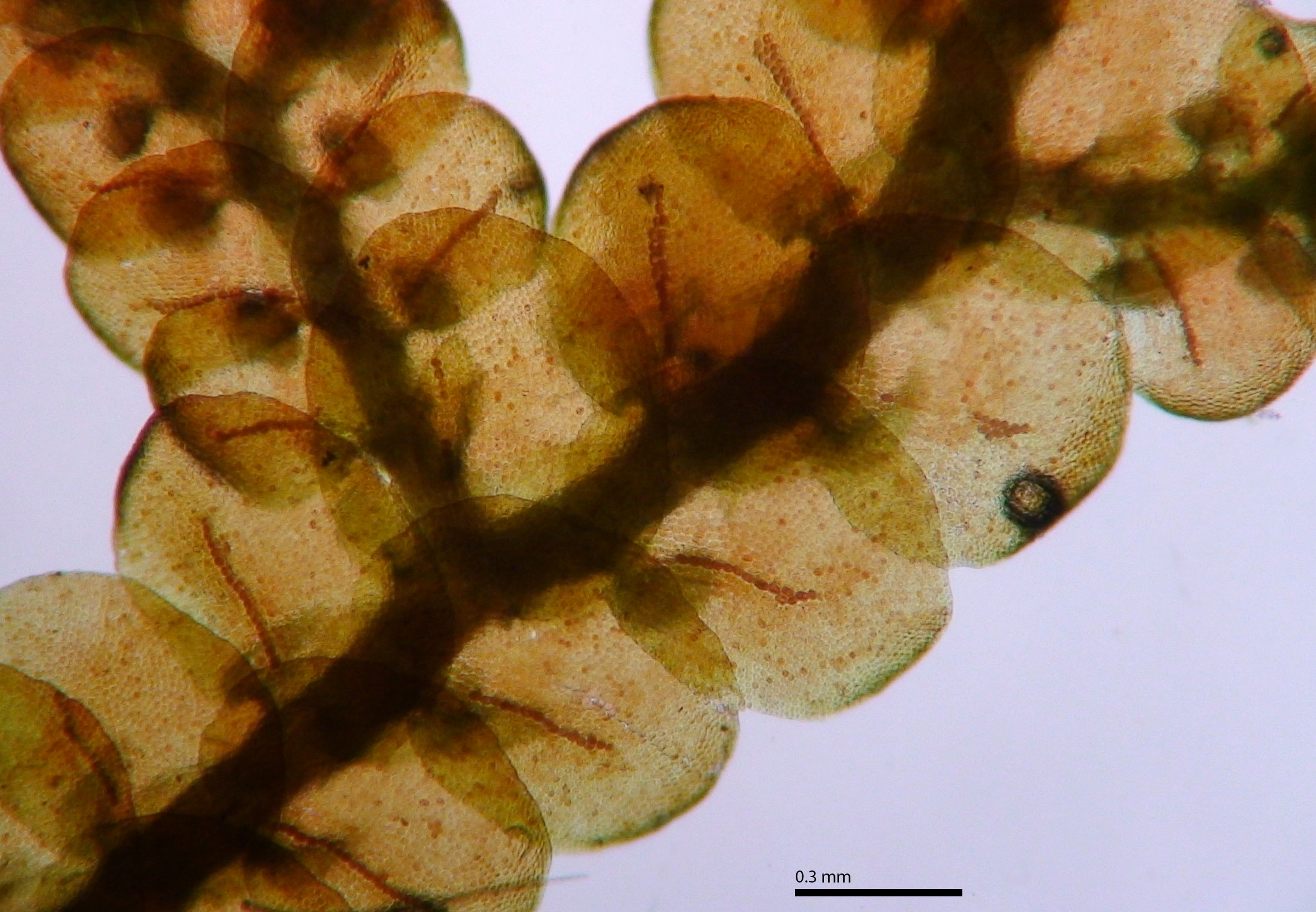Frullania asagrayana Mont.
Family: Frullaniaceae
Synonyms
Frullania tamarisci subsp. asagrayana (Mont.) Hatt.
NatureServe Conservation Status
G5
Distribution
Endemic to eastern North America. Canada to Georgia, Alabama, west to Oklahoma.
Habitat
In the Southern Appalachians F. asagrayana is “an abundant plant” (phrase from Schuster 1992). In moist forests it often covers large sections of tree trunks sometimes forming lush mats that grow to hang freely from the bark. The elevational range is considerable from our tallest peaks over 6,000 feet (where it is often abundant) to <500 feet. Occurrences on rock are common. In drier oak-hickory forests F. asagrayana will favor the shaded side of trees and give way to more xeric tolerant species on the flanks of the sunny side. The species if often abundant on limbs of Rhododendron maximum overhanging creeks or other moist locations and has been found once as an epiphyll on R. maximum.
Brief Description and Tips for Identification
Shoot width: to just over 1 mm wide. Color: reddish; green in shade forms; often with a reflective sheen. Cell walls in leaf lobe: with intermediate thickenings. Dorsal lobe insertion: cordate. Lobules: longer than wide, length approaching 2x or more the width.
Dioicous. Perianths on lateral branches; perianth surface without tubercles.
As a regionally diagnostic character, the leaf lobe has a line of ocelli (modified cells without chloroplasts and containing a single, large oil body). F. asagrayana is one of only three regional species (incl. F. kunzei, F. caulisequa) whose inflated lobules are decidedly longer than wide.
Salient Features
- Line of ocelli in leaf lobe
- Lobules longer than wide
Our one species of Frullania that should never give problems in identification (unless it is overlooked when present in minor admixture with other Frullania species).
